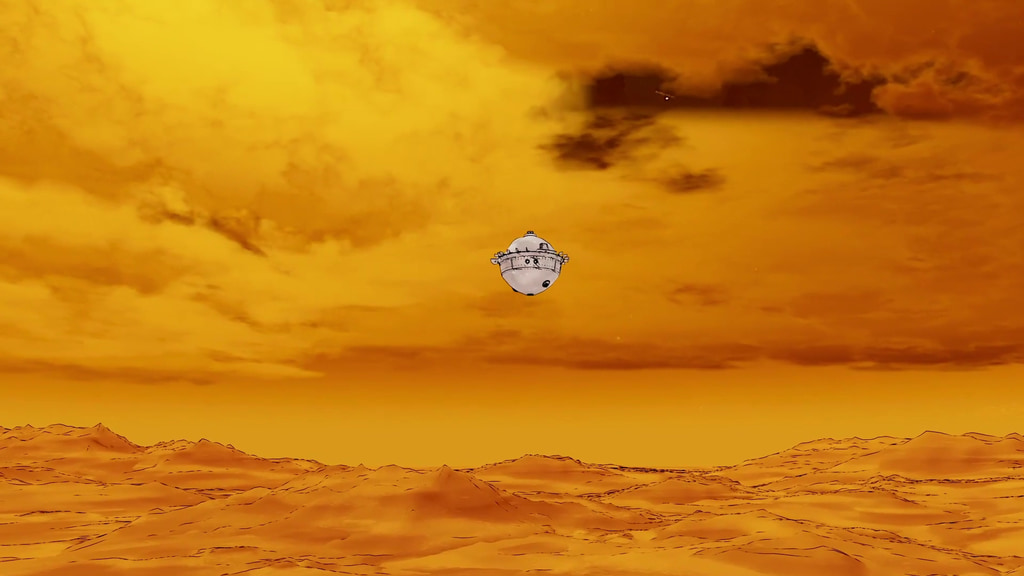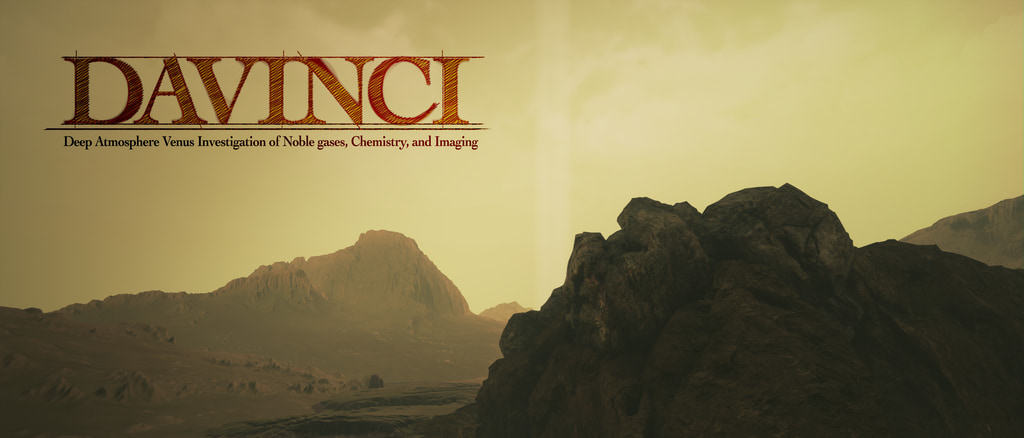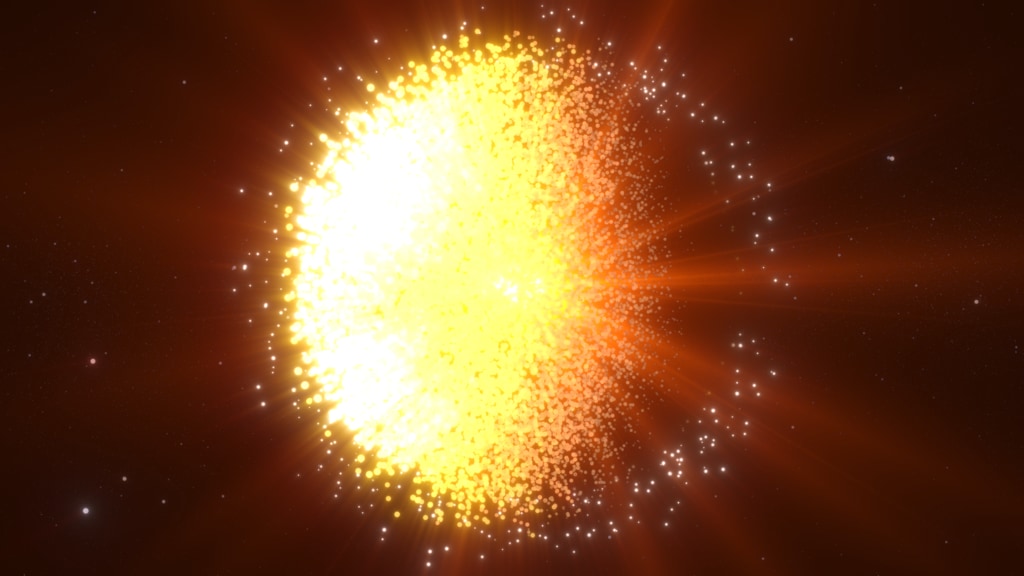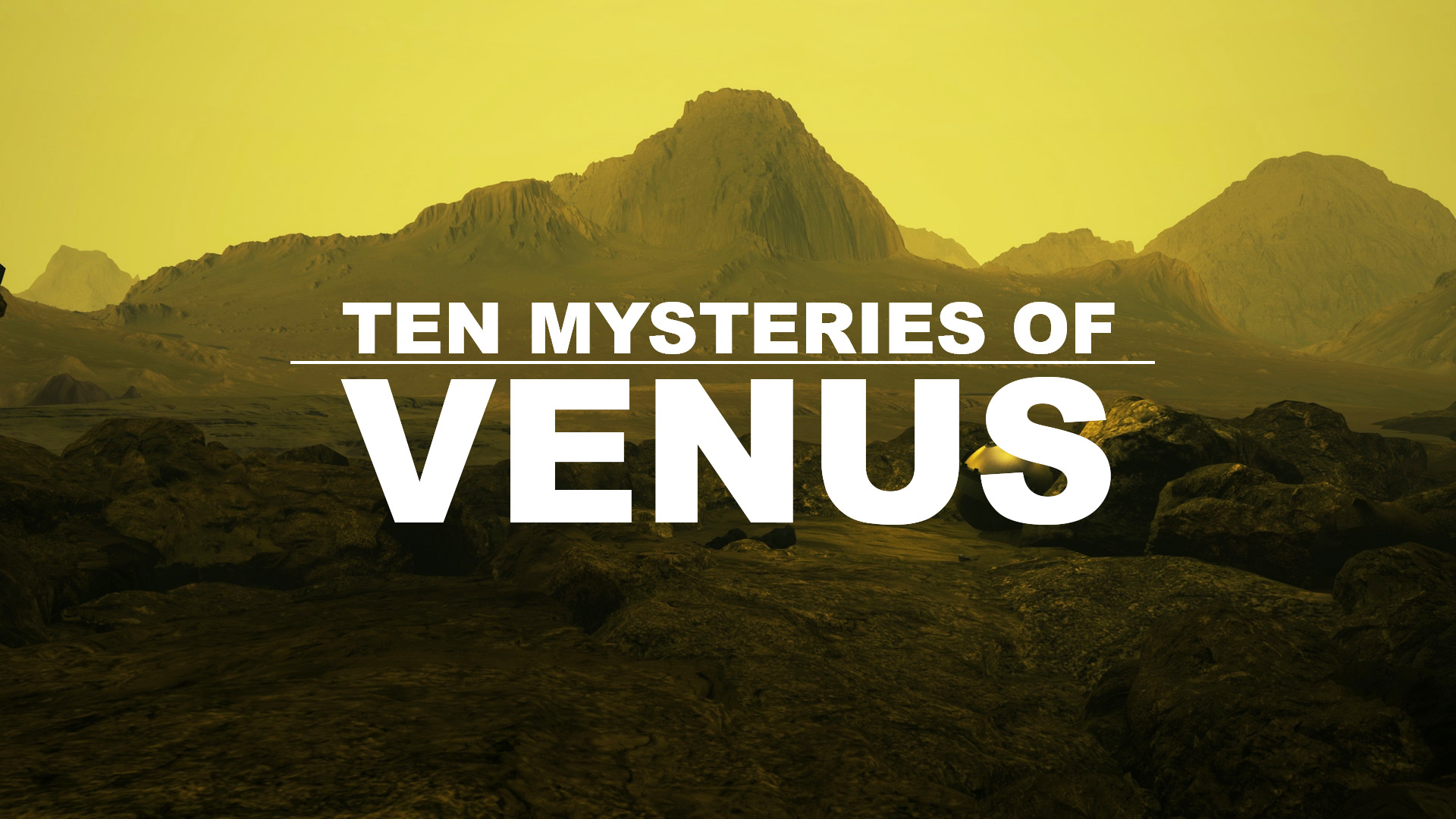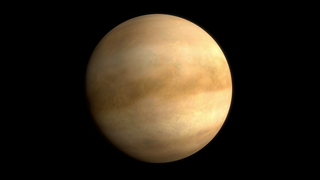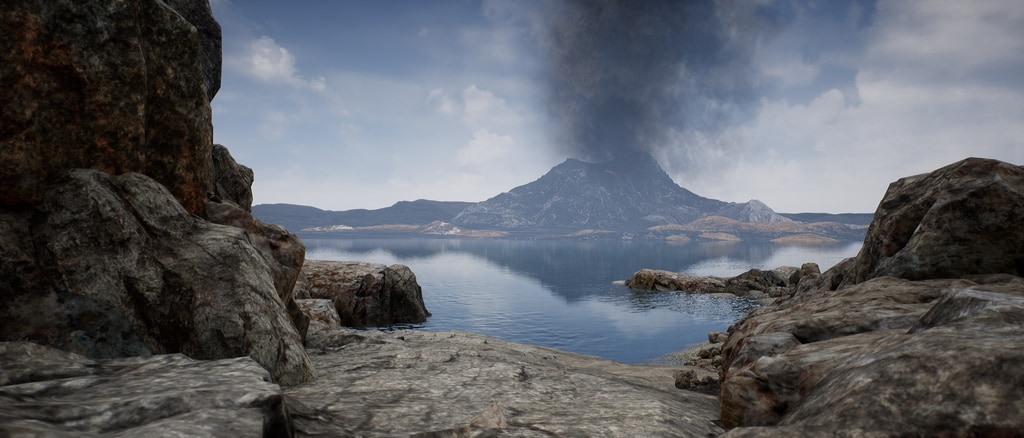DAVINCI
Overview
Launching in 2029, NASA’s Deep Atmosphere Venus Investigation of Noble gases, Chemistry and Imaging (DAVINCI) mission will bring a rich suite of instruments to Venus to address long standing questions about Earth’s sister planet. Some scientists think Venus may once have been more Earth-like in the past, with oceans and pleasant surface temperatures -- DAVINCI data will help us determine if this intriguing possibility is true. Clues to Venus’ mysterious past may be hidden in atmospheric gases or in surface rocks formed in association with ancient water in the planet’s mountainous highlands.
Videos
DAVINCI Probe's Eye View
Go to this pageAn overview of the DAVINCI mission through the eyes of the descent probe.Music is "Mountains of Hokkaido" by Natalie Holt and Yoann Le Dantec of Universal Production Music || 13887_DAVINCI_PEVAA.02257_print.jpg (1024x576) [101.1 KB] || 13887_thumbnail.jpg (1920x1080) [157.6 KB] || 13887_DAVINCI_PEVAA.02257_searchweb.png (320x180) [69.3 KB] || 13887_DAVINCI_PEVAA.02257_thm.png (80x40) [5.1 KB] || 13887_DAVINCI_PEVAA.mp4 (1920x1080) [177.3 MB] || 13887_DAVINCI_PEVAA_twitter_720.mp4 (1280x720) [32.7 MB] || 13887_DAVINCI_PEVAA_facebook_720.mp4 (1280x720) [190.4 MB] || 13887_DAVINCI_PEVAA.webm (960x540) [47.1 MB] || 13877_DAVINCI_PEVAA_caption.en_US.srt [2.9 KB] || 13877_DAVINCI_PEVAA_caption.en_US.vtt [2.8 KB] ||
The DAVINCI Mission to Venus
Go to this pageDAVINCI the Movie || DaVinci1021cut422HQ.00130_print.jpg (1024x438) [75.7 KB] || DaVinci1021cut422HQ.00130_searchweb.png (180x320) [61.3 KB] || DaVinci1021cut422HQ.00130_thm.png (80x40) [5.3 KB] || DaVinci1021cut1080h264.mp4 (1920x820) [208.7 MB] || DaVinci1021cut720422HQ.mov (1682x720) [3.5 GB] || DaVinci1021cut720h264.mp4 (1280x548) [133.2 MB] || DaVinci1021cut720h264.webm (1280x548) [22.0 MB] || DaVinci1021cut422HQ.mov (5045x2160) [20.3 GB] || DaVinci1021cut1080422HQ.mov (2523x1080) [5.6 GB] || 20351_DAVINCIMissiontoVenus_CAPTIONS.en_US.srt [3.8 KB] || 20351_DAVINCIMissiontoVenus_CAPTIONS.en_US.vtt [3.6 KB] ||
The Mysterious Planet
Go to this pageBy studying this mysterious planet, scientists could learn a great deal about exoplanets, as well as the past, present, and possible future of our own. Watch this video to learn more!Music provided by Killer Tracks: "The Power of Pride" - Matthew St Laurent || MysteryPlanet_Thumbnail_print.jpg (1024x576) [80.4 KB] || MysteryPlanet_Thumbnail_searchweb.png (320x180) [79.6 KB] || MysteryPlanet_Thumbnail_thm.png (80x40) [5.9 KB] || 13339_The_Mysterious_Planet_FacebookHD.mp4 (1920x1080) [192.0 MB] || 13339_The_Mysterious_Planet_youtubeHD.mp4 (1920x1080) [256.2 MB] || 13339_The_Mysterious_Planet_YouTube4K.mp4 (3840x2160) [633.2 MB] || 13339_The_Mysterious_Planet_Facebook4K.mp4 (3840x2160) [376.5 MB] || 13339_The_Mysterious_Planet_MASTER.mov (3840x2160) [8.5 GB] || The_Mysterious_Planet.en_US.srt [2.5 KB] || The_Mysterious_Planet.en_US.vtt [2.5 KB] || 13339_The_Mysterious_Planet_YouTube4K.webm (3840x2160) [50.3 MB] || MysteryPlanet_Thumbnail.tif (3840x2160) [31.7 MB] ||
Ten Mysteries of Venus
Go to this pageTen mysteries of our sister planet, Venus.Music is "Spring into Life" by Oliver Worth of Univeral Production Music.Watch this video on the NASA Goddard YouTube channel. || 13972_mysteriesvenusthumb.jpg (1920x1080) [385.7 KB] || 13972_venusmysteries.01764_searchweb.png (320x180) [65.7 KB] || 13972_venusmysteries.01764_thm.png (80x40) [4.6 KB] || 13972_venusmysteries.mp4 (1920x1080) [299.0 MB] || 13972_venusmysteries_twitter_720.mp4 (1280x720) [53.1 MB] || 13972_venusmysteries_facebook_720.mp4 (1280x720) [317.0 MB] || 13972_venusmysteries_twitter_720.webm (1280x720) [32.1 MB] || 13972_venusmysteries_caption.en_US.srt [6.3 KB] || 13972_venusmysteries_caption.en_US.vtt [5.9 KB] ||
Venus in a Minute
Go to this page“Venus in a Minute” – a vision for exploration of our mysterious sister planet in response to National Academy of Sciences Decadal priorities that will provide a new window on the evolution of planets in our solar system and beyond. Music Credit: "Save us All" by Alec Michael Harrison via Universal Production Music || venus_thumb.jpg (3840x2160) [197.9 KB] || 13640_VIAM_MASTER.01625_searchweb.png (320x180) [26.7 KB] || 13640_VIAM_MASTER.01625_thm.png (80x40) [2.9 KB] || VIAM_MASTER_13640_facebook_720.mp4 (1280x720) [88.2 MB] || VIAM_MASTER_13640_twitter_720.mp4 (1280x720) [15.2 MB] || VIAM_MASTER_13640.webm (960x540) [33.1 MB] || VIAM_MASTER_13640.mp4 (3840x2160) [87.9 MB] || VIAM_caption.en_US.srt [1.5 KB] || VIAM_caption.en_US.vtt [1.5 KB] ||
Evolution of Venus Animations
Go to this pageEarly Venus Landscape animation || VenusEvoSequence01_00009_print.jpg (1024x438) [92.2 KB] || VenusEvoSequence01_00009_searchweb.png (320x180) [89.5 KB] || VenusEvoSequence01_00009_thm.png (80x40) [6.6 KB] || Venus_EVO_seq1_1080_h264.mov (1920x1080) [65.9 MB] || Venus_EVO_seq1_ProRes.mov (5045x2160) [6.3 GB] || Venus_EVO_seq1_UHD_ProRes.mov (3840x2160) [4.5 GB] || VenusEvoSequence01 (5045x2160) [256.0 KB] || VenusEvoSequence01_1080p60.mp4 (2522x1080) [39.3 MB] || VenusEvoSequence01_1080p60.webm (2522x1080) [6.3 MB] ||
Press Briefings and Interviews
Quickshot: Skywatchers Delight! July 12-13 Venus and Mars Will Appear Extra Close To Each Other In Night Sky
Go to this pageQuick link to associated B-ROLLQuick link to soundbites with Giada Arney / DAVINCI Deputy Principal InvestigatorQuick link to soundbites with Jim Garvin / DAVINCI Principal Investigator || venus.banner3-final.jpg (926x179) [50.5 KB] || venus.banner3-final_print.jpg (1024x197) [50.0 KB] || venus.banner3-final_searchweb.png (320x180) [112.6 KB] || venus.banner3-final_thm.png (80x40) [9.1 KB] ||
